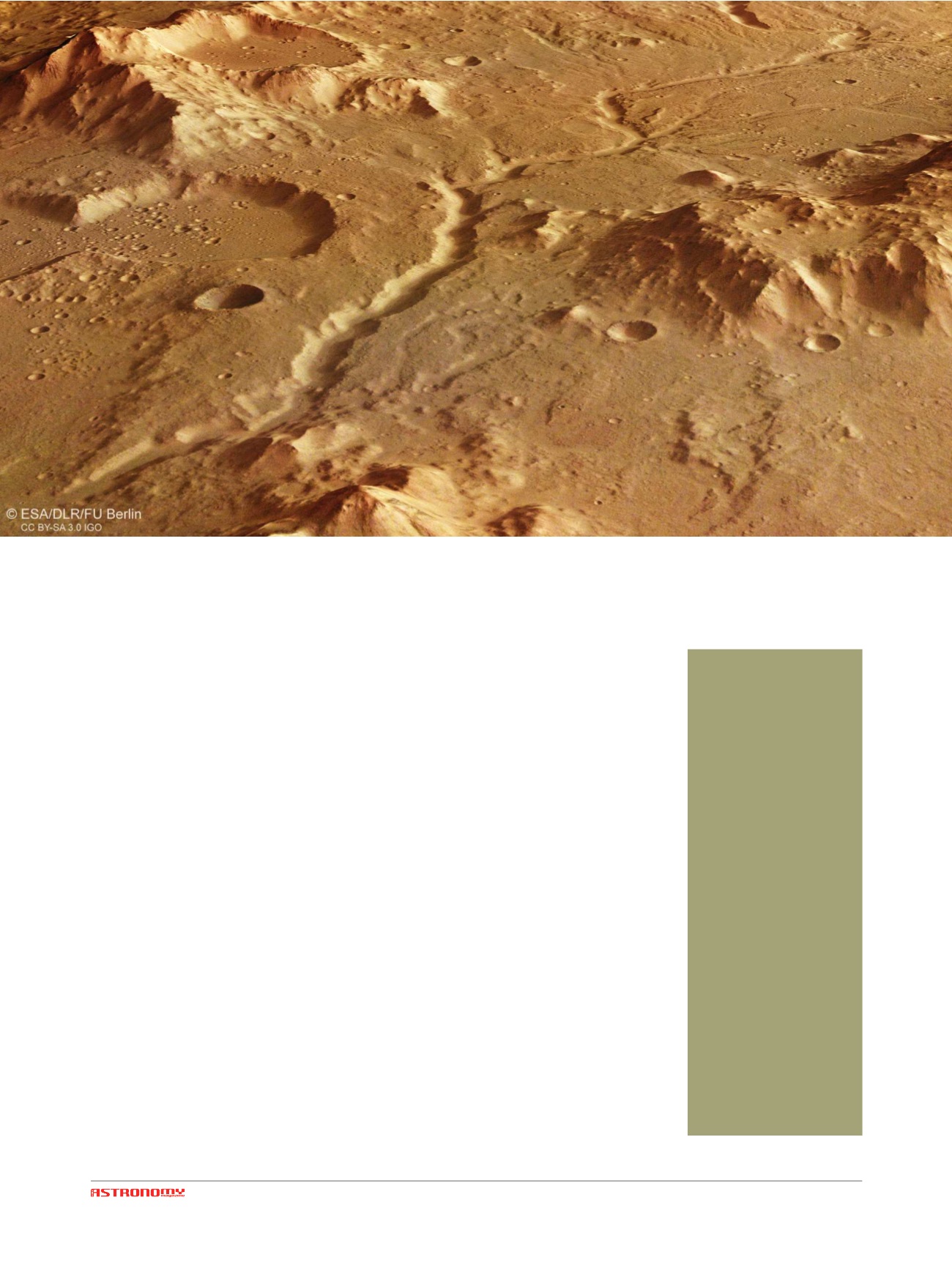

SEPTEMBER-OCTOBER 2017
The prominent river channel that runs
from south to north (left to right in the
above image) is thought to have cut
through the region around 3.6 billion
years ago. It apparently originates from
the impact crater in the south, breaching
its crater wall and flowing towards the
north, navigating the hummocky moun-
tains of the local topography.
The valley is fed by numerous tributaries,
pointing to extensive rainfall and surface
runoff from higher to lower regions.
Groundwater seepage is also thought to
have played a contribution in shaping the
valley. A similar channel snakes its way
across the bottom right of the scene.
The mineralogy in the Libya Montes re-
gion is very diverse, as revealed by orbiting
spacecraft. Aqueously formed and chemi-
cally altered minerals testify to past hy-
drothermal activity that may be linked to
the formation of the Isidis impact basin.
For example, the impact could have mo-
bilised liquid water by melting subsurface
Tributes to wetter
times on Mars
by ESA
A
dried-out river valley with numer-
ous tributaries is seen in this re-
cent view of the Red Planet cap-
tured by ESA’s Mars Express.
This section of the Libya Montes region,
which sits on the equator at the bound-
ary of the southern highlands and north-
ern lowlands, was imaged on 21 Feb-
ruary 2017 by the spacecraft’s high-reso-
lution stereo camera.
The Libya Montes highlands mountains,
one of the oldest regions on Mars, were
uplifted during the formation of the
1200 km-wide Isidis impact basin some
3.9 billion years ago, seen at the north of
the context map.
The features seen across the broader re-
gion indicate both flowing rivers and
standing bodies of water such as lakes or
even seas that were present in the early
history of Mars.
P
erspective view look-
ing along an ancient,
dried out river channel in
the Libya Montes region
close to the equator on
Mars. The valley snakes
between hummocky
mountain terrain and is
fed by numerous tribu-
taries arising from rainfall
and surface runoff. To the
left, part of a co-joined
crater can be seen, its
smooth floor pockmarked
in smaller impact craters.
The oblique perspective
view was generated
using data from the Mars
Express high-resolution
stereo camera stereo
channels. This scene is
part of the region imaged
on 21 February 2017 dur-
ing Mars Express orbit
16647. The main image is
centred on 90°E / 1°N. In
this orientation north is
roughly to the bottom.
[ESA/DLR/FU Berlin, CC
BY-SA 3.0 IGO]
















